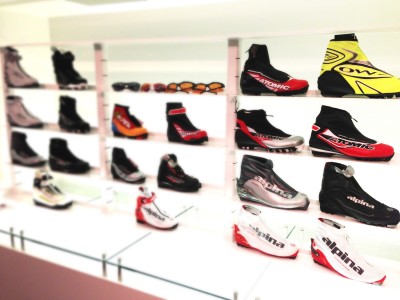 Choosing the right cross country Ski Boot is just like trying to find a comfy slipper for your foot.
Choosing the right cross country Ski Boot is just like trying to find a comfy slipper for your foot.
For classical touring, look for a comfortably snug fit with enough room for the socks you like. Generally, tourists will use socks the way hikers do, with a thin synthetic, silk or wool liner under a thicker wool or synthetic outer sock. Back-country skiers might want to have room for thicker socks, but some rely on the warmth of double boots to let them fit the boot snugger with a thinner sock.
For high-performance classical, wear the socks you like, generally thinner than for touring. Lace the boot snugly and then flex it. With your foot fully flexed, you should just feel the front of it with your toes. Hard contact means the boot is too small. No contact means you can probably size it down. Light contact means you have enough room for the boot to shorten as it flexes, but you still have as snug a boot as you can manage, for best control on downhills.
For skating, the boot should be the exact size of your foot, wearing the socks you find comfortable. Some people wear only a thin sock, others need the warmth of thick ones.
To test the fit, lace and buckle the boot snugly and stand on one foot. Gentle but definite contact all round your foot means you have the best size. Some people who prize control over comfort will go tighter. You never want to go looser. You will hate a loose skate boot. You want your toes to touch the end of the boot. If the choice is between crushing your toes or having a bit of room, you’ll have to take the bit of room and fill it with a thicker sock.
Many skate boots have an adjustable heel strap which can adjust it almost half a size to help dial in the fit for your particular foot.
